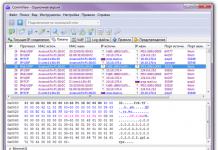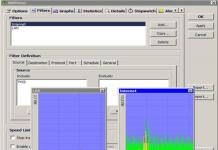Users often ask what the processor temperature should be. And for good reason. After all, large values that demonstrate overheating can lead to PC failure. Therefore, further we will consider which temperature indicators are normal and how to check them.
The processor is called the “brains of the PC”, which processes a huge amount of information. The more work the device does, the hotter it gets. Accordingly, its temperature rises.
There is an opinion that the option with a standard cooler does not fully justify itself. Therefore, it is better to spend a little more money and buy it separately. Those users who bought the second option confirm that the money spent on it was fully justified .
Permissible temperatures of the processor and video card
To find out what the permissible operating temperature of a processor is, you must first look at its model and generation. For example, the normal temperature of an Intel core i5 processor during operation can rise to 70° (seventy degrees). Which often caused the device to overheat.
In a more modern PC or laptop device, you can see new energy-saving processors that generate minimal heat. But this option also has a maximum operating temperature and limit limits that cannot be exceeded.
If you believe the words of some manufacturers, their critical norm is 100 degrees. After increasing the specified amount, destructive processes begin in the device, which lead to breakdown.
The temperature of the processor cores during operation ranges from 50° to 70° - 80°. In a “quiet” state, the warm-up indicator does not rise above forty.
So, the generally accepted values:
- In idle mode – up to 45°;
- At load – up to 70°;
- Critical – above 75°.
I repeat – these are average values. Each device has its own acceptable limits!
The temperature of devices from different manufacturers may vary. You can read this information in detail in the instructions supplied by the manufacturer.
Modern technology is equipped with sensors that help monitor the temperature on devices, including the processor. Some PC models have automatic protection against overheating, but it is better to avoid this situation.
Cooling systems
There are several main types of such systems:
- Active. It is represented by coolers consisting of radiators and a fan. This is the most common type of cooling that can be found even on budget PCs.
- Passive. These are simple heatsinks on top of the processor. It is clear that such systems have little effect.
- Liquid. This is the most expensive and effective system. It consists of a pump that drives liquid through tubes connected to the processor. Circulating fluid helps reduce processor heat. Such a device requires more energy, therefore it costs more. Such protection is usually installed on “gaming” computers.
In what situations is temperature controlled?
The main situations and problems that require warm-up control are as follows:
- Purchasing a new computer.
- Installation of new cooling equipment.
- The PC turns off or reboots on its own.
- The PC begins to slow down when working with applications and programs.
- “Burnt” smell from the “system unit”.
- Need to change worn thermal paste.
- Dust pollution.
- Making a decision to overclock the processor.
After carefully reading the list provided, you should remember that sometimes checking your temperature is just a safety measure, and in some cases it is an urgent need.
How to find out the processor temperature
The first thing you need to know is that there are a huge number of different programs for this purpose. But you shouldn’t rush from one to the other. It is better to opt for one or two products that are most convenient to work with. It is also important to know that among the paid options Everest deserves special attention. But you can check the temperature with any free program. Many of these apps work great. All these utilities demonstrate PC performance and show information from sensors. And the processor temperature is included in the information.
There is another option. You need to go into the BIOS. To do this, press the F2 or Del key during boot (the choice of key depends on the manufacturer). Then you need to find the System Health tab. It displays sensor indicators.
How to lower CPU temperature
If the question of reducing the processor temperature is raised, it is important to check the cooling system (cooler) for cleanliness. Often a lot of dust accumulates on it, which significantly affects the cooling capabilities.
Users say that a simple procedure using a home vacuum cleaner on low power helps clean up dust. There is no need to disassemble the cooler, but if high-quality cleaning is required, then it is better to at least disconnect it from the processor.
Most often, such a simple procedure makes it possible to reduce overheating and avoid further troubles.
Another factor that users often forget about is the temperature in the room. As practice shows, room temperature can change the temperature on the processor from five to ten degrees. Therefore, it is better to place the PC away from hot batteries and similar places. You should also choose a room with the lowest possible temperature for work.
Why does a laptop get hot and how to cool it?
Laptops heat up a little less, but it’s impossible to say that this problem does not arise with them. If after half an hour of operation the device warms up so much that it can be used to iron clothes, then you should look for cooling methods. The reasons for this situation may be the following:
- Dirt.
- Dried thermal paste.
- Using new games and graphic applications on an old laptop, etc.
Before raising the issue of options for reducing heating, you should accurately determine its cause and check the heating temperature. If heating exceeds permissible limits, then the following actions should be taken:
- Clean the device from contamination. You need to unscrew the screws and use a simple soft brush. Then wipe the ventilation hole and blow through the fan grille. If you can’t do this on your own, then you need to contact a professional.
- Replacing thermal paste. First, clean the device from the remnants of the old paste and treat the surface with alcohol. apply a very thin layer, which should hide the small gaps between the video card and the processor. If the paste is applied in a thick layer, then the heat will not be able to escape and the heating will increase many times faster.
Read also:
Several other cooling options
Special stand
The effectiveness of using such a device is not very high, but nevertheless it exists. This way you can lower the temperature by five to six degrees, and it should be added that the stand will take up one USB port.
Various applications
There are a number of programs that help increase fan speed. At the same time, the temperature drops slightly, but the coolers wear out much faster in this operating mode.
Users note that proper PC care helps avoid unwanted overheating. Many of them constantly monitor the temperature of the device using special utilities. From their opinions, several important recommendations can be identified that help extend the life of a laptop:
- Once a year you need to clean the device and change the thermal paste.
- Do not place the computer on a soft surface or keep it on your lap.
- You should use a special stand for the device.
- Don't keep your laptop on the floor. It is in this area that the maximum amount of dust collects.
Users also claim that the manufacturer’s website, which contains all the numbers and operating characteristics of the computer, helps to simplify the problem of measuring temperature. By carefully studying it, you can accurately find out the maximum load on the device you have chosen for purchase.
If the processor temperature exceeds the permissible norms, it requires urgent action. It will not be difficult to decide what exactly to do if you carefully read the above material. You cannot work on an overheated device; this can result in serious damage. Keeping your processor at normal temperatures not only prolongs its life, but also helps it run smoothly.
Probably all or almost all users pay attention every day to performance indicators of their home or work computer, such as, say, performance or noise. But, unfortunately, very few people know that in addition to the visible manifestations of the “health” of the PC, there are also manifestations that cannot be noticed without certain tricks. In particular, this is the operating temperature of the processor and some other components.
Semiconductors, on the basis of which all modern integrated circuits are built, are very sensitive to temperature conditions. At a temperature of 90-95 ºС, irreversible changes begin to occur in the semiconductor microcircuit, which, although not immediately, still disable it. If we take into account that, say, in a processor the temperature sensor is not located directly in the crystal itself, but slightly to the side, then most likely it will show a temperature of 5 degrees less than the temperature of the semiconductor. Therefore, the maximum processor temperature should not rise above 85‑90 ºС. And the operating temperature of the processor is over 75‑80 ºС. Manufacturers of modern processors have provided fairly reliable mechanisms to protect their products from elevated temperatures. For example, a computer based on an AMD processor will simply turn off when the processor reaches a certain temperature. This maximum operating temperature of the processor is set in the BIOS and can range from 70 to 90 ºС.
At Intel, things are a little more interesting. Starting with processors of the Pentium 4 family, a throttling system is built into the processors. Its essence is that the processor, upon reaching a certain threshold temperature, begins to skip some clock cycles in order to reduce its heat generation and thereby stop the temperature increase. Of course, this also reduces productivity. From my own experience, I will say that it is impossible to work normally with such a machine, but at least it is possible to shut down the system correctly. The operating temperature of the processor at which throttling is activated is also regulated through the BIOS, and can vary within the same limits as for AMD processors - the shutdown temperature. In what cases is constant measurement of the processor temperature required? Ideally - always. But this is especially true in two cases: you are a “hardcore gamer” or an overclocking fan. In the second case, you should already know everything about temperature measurement, and this article is not for you. But everyone loves to play, including people with little computer knowledge.
In essence, there is only one way to measure the processor temperature - software. A special program takes information from temperature sensors, and, as a rule, not only from the processor sensor, but also from several others, and then displays this data in a certain form. For AMD processors, a free utility from the manufacturer called AMD OverDrive is suitable. In addition to monitoring temperature indicators, it will provide additional capabilities to owners of video cards based on video chips from AMD. Owners of Intel processors can use the Real Temp utility.
In addition to these utilities, “tailored” for processors of a specific manufacturer, there are a large number of universal products. These are, in particular, CoreTemp, Hardware Sensors Monitor, SpeedFan, HMonitor and many others. Among them there are free programs that are not inferior in functionality to paid ones. All of these utilities can display the current temperature in the system tray; some come with gadgets for the Windows Vista/7 desktop. Of course, if you have the latest model processor, then you need to select the latest version of the utility, because, as a rule, older versions either do not support new processors or behave incorrectly.
The operating temperature of the processor during idle time is usually low, so you should not rely on this indicator. The behavior of the processor “under load” is much more important. In most cases, these are “heavy” modern 3D games. Therefore, if the temperature monitoring program you choose supports this feature, you should select logging of system temperature changes in it. This will allow, after the end of the mass killing of monsters, to check how the main components of the computer behaved under maximum load.
Hello everyone, do you know that a processor temperature of 40 degrees is generally normal, but for some people 60 degrees is normal... No? - then this note of the day is for you 😉 Find out what the processor temperature should be!
Many PC users are concerned about the normal operating temperature of the processor, what it depends on and how to measure it. Some of them know that overheating the processor leads to its premature aging, reduced performance and system fault tolerance, but there are those who do not care about this at all, and in vain.
The list of parameters that affect processor temperature is quite large, and not all of them can be touched or measured. This includes the following basic parameters:
- Processor manufacturing technology;
- Processor manufacturer;
- Number of processor cores;
- Processor operating frequency;
- Methods and quality of heat removal.
Manufacturing technology
The technological process of manufacturing PC processors has a long history, and the main efforts of development engineers have always been aimed at reducing the size of the elementary transistor, which represents the main switching element of the processor chip. There can be hundreds of millions and even billions of such transistors in modern processors. It is not difficult to imagine what size the transistor should be. Roughly, we can say that processors have gone from 100 micron technology to 22 nm or less (one nm is just one billionth of a meter!). It is clear that the smaller the area the transistor occupies, the less heat it will generate, in other words, the operating temperature of the processor will decrease.
Processor manufacturer
Today, two global companies are leaders in the production of PC processors: Intel and AMD. Intel's share is about 80% of all processors produced in the world, and AMD accounts for 10 to 20% (the rest is produced by other, less well-known companies). Such a delicate technological process as the production of processors and other microcircuits requires perfectly clean production, and this requires additional investments and increases the cost of the produced microcircuits. AMD has chosen as its main focus the production of budget processors, so the purity of their production is inferior to Intel, although AMD processors are indeed cheaper than their Intel counterparts. But the operating temperature of AMD processors, all other things being equal, is higher than the temperature of Intel processors.
Number of processor cores
A multi-core processor is a processor that contains several processor cores of the same type, implemented either on one chip or on several, but in one package. Of course, when such a processor operates, heat will be generated from each core, so, in general, a multi-core processor should heat up more than a single-core one. But due to the common housing and special thermal protection measures, the amount of heat generated will be lower than the amount of heat generated by each core.
Processor operating frequency
For each processor and for each core in a multi-core processor, the manufacturer determines its nominal operating frequency. This frequency is one of the determining factors in the speed of the processor and the performance of the entire computer system. As the operating frequency increases, the core temperature increases, and as it decreases, it decreases. The operating frequency of the core is determined by the product of the clock frequency generated by the generator on the motherboard and the multiplication factor built into the processor by its manufacturer. An attempt to increase both (called overclocking the processor) leads to an increase in the operating frequency and an increase in its temperature.
Methods and quality of heat removal from the processor
The most common way to remove heat from the processor is to install a heat sink on the processor case, on which a fan is installed to remove heat from the heat sink to the surrounding area. The quality of such heat removal depends on the following factors:
- Reliable attachment of the radiator to the processor body;
- Good thermal contact of the processor case with the radiator housing;
- The ability of a fan to dissipate the required amount of heat.
The reliability of attaching the radiator to the processor case is a topic for a separate article, and other factors require separate consideration.
What ensures good thermal contact between the processor case and the heatsink? This contact should not allow any gaps in this connection that may be caused by irregularities in the processor cover and heatsink pad. To fill such gaps, thermally conductive paste is used. It tends to dry out over time, so the first thing to do when the processor temperature rises is to remove the heatsink along with the fan and replace the thermal conductive paste.
If this does not help, then you need to pay attention to the fan speed. In extreme cases, it may not rotate at all, which “ensures” an increase in the processor temperature. The usual reason for this fan behavior is dried grease (or lack thereof) in the bearings. It is better to remove the fan and drop a few drops of regular machine lubricant into both bearings - upper and lower.
CPU temperature monitoring
There are many different utilities that allow you to monitor the processor temperature. But it is hardly advisable to use programs that continuously monitor the temperature - they will only take up processor time and user attention. You need to access them periodically, just to make sure the processor is working properly. And if suddenly inexplicable drops in computer speed, and even more so, freezes, begin to occur, then it’s time to check the operating temperature of the processor. This is proposed to be done using a modern and unique monitoring program for the entire computer - AIDA64.
Depending on all the mentioned factors affecting the processor temperature, typical values of this indicator can be given for different processors.
- Intel processors - from 30 to 60 degrees Celsius, maximum - about 70. When idle, the usual temperature is no more than 35, and under load it can rise to 60-70;
- AMD processors – from 40 to 70 degrees Celsius. The maximum is about 80. When idle, the usual temperature is about 45; under load it can rise to 80.
You should also take into account that laptops have a rather weak heat dissipation system, so their temperatures, especially with AMD processors, even when idle, can reach higher values... however, you will no longer be afraid of unusual indicators, because you know what processor temperature should be be.
In contact with
How to find out the processor temperature in Windows 7/10 and cool the CPU? Our programs for testing and monitoring processor operation will help.
If your cooling fan starts making loud noises and power consumption skyrockets, your PC's processor is likely overheating. This problem can lead to random reboots and serious damage, after which you will have to replace both the processor and cooler of the computer.
Normal CPU temperature
The Windows processor temperature can be found in the BIOS or using the SpeedFan, AIDA64, CAM, and Speccy utilities. The following temperatures are considered acceptable for the CPU:
- Under low load, the processor temperature should be between 30 and 50°C.
- Under heavy loads, such as computationally intensive programs running, temperatures can rise to 95°C. Such high values, however, reduce the lifespan of the CPU.
- In any case, the maximum temperature your PC processor can reach should be below 100°C.
Please note that at low air temperatures, the hardware of your computer also cools. Because of this, water condensation may form on it, which can damage the PC. For example, if your laptop is on the loggia or came home from a frosty street, warm up the device to the usual room temperature and wait about an hour before turning on the “supercooled” computer.
How to view the processor temperature using the Aida program
As an example, we will show how to check the temperature of your PC's processor in the popular Aida program. This is more convenient and sometimes faster than understanding the BIOS settings, and gives a fairly accurate result.
You can download the application on the official website of the developer - the trial version of Aida64 is available for free.
- Install the program following the on-screen prompts.
- Select "Computer" from the side menu.
- Among the subsections, find “Sensors”.
- The “Temperatures” section will indicate the values for your PC components. The temperature of the processor components will be indicated by the abbreviation CPU.
As you can see in the screenshot, the CPU temperature of our computer is within normal limits.
By the way, using Aida64 it is easy to see the processor temperature in Windows 10/7/XP, as well as on Mac OS X and Android. On Linux, this can be done through the lm_sensors console program or the PSENSOR application.
How to check CPU load
High CPU temperatures under high load are normal. To find out how heavily your CPU is loaded, just go to the task manager.

Using the + + key combination, open the task manager and click on the “Performance” tab. You can also get to the task manager through the command line: to do this, you need to set the “cmd” value in the “Start” menu search, and in the program that opens, enter the “taskmgr” command without quotes.
In the upper left part of the new window you will see the current CPU load. The graph at the top right shows the CPU load chronology for the last 60 seconds.
If the intense load continues for at least one minute, and the processor temperature is above 60°C, this is normal.
What to do if the CPU overheats?
If your processor gets too hot, the following steps will help reduce its temperature:

Using the free utility SpeedFan, you can speed up the CPU fan to lower the processor temperature.
Check the CPU for errors using the CPU Stability Test program. This way you can find out if the high operating temperature of the processor is a consequence of some other problem.
- To get rid of the accumulated hot air, open the computer case. But this is only a temporary solution, because in this case all PC components will not be protected from dust.
- If you've already removed the lid of your desktop PC, but it's still hot as hell, try removing the hot air with a fan or vacuum cleaner.
- If your computer only has a passive cooling system, installing an active fan will help reduce the temperature.
By the way, maximum cooling of PC components is provided by water cooling systems.
- If you constantly use software that uses too much CPU, replace the CPU with a more powerful one. Our correspondent will help you choose the best option.
It is the heart of any computer or mobile system. It bears the maximum load of performing basic computational activities, the presence of an excessive amount of which can increase the temperature of the processor (CPU). Exceeding the limit values for overheating can only lead to its failure. The following is an overview of several popular utilities that allow you to diagnose the temperature indicators of this device.
Why is the CPU temperature rising?
Any calculations affect the increase in temperature. Even when the system is idle, the processor is still accessed whether you want it or not. This is due to the fact that system services run in any OS. True, they do not cause peak loads, but when additional processes appear, the temperature can go off scale. Timely shutdown of unused components can significantly reduce the load.
Quite often, heating is observed in computers with an incorrectly installed cooling system, when the cooler does not cope with its task. Overclocking the processor has a very strong impact, so you need to be extremely careful when overlocking or manually assembling a computer.
Factory-assembled laptops do not have the problem of rising temperatures. Such situations can only arise if the processor is manually replaced or the RAM is reduced.

The simplest software way to reduce the load would be to change the power plan to a power-efficient design (rather than the high performance or recommended default balanced design).
Manufacturers of modern processor chips set their own limit values, which are recommended for normal CPU operation.
If we consider the average values for most types of processors, the CPU temperature should correspond to the following ranges in degrees Celsius (for example, we take the SkyLake, IvyBridge and similar models and the Intel Core i3/5/7 family):
- idle or inactive mode of the system with the “Desktop” running without performing maintenance operations - 30-41 (28-38);
- load mode (games, virtualization, rendering, archiving, etc.) - 50-65 (40-62);
- The recommended maximum temperature threshold is 67-72.
Despite such standards, Intel processors are capable of withstanding higher values, which does not particularly affect their performance. For most AMD processors, the maximum CPU temperature should be no more than 61 degrees.
Determination using BIOS
In Windows, getting to temperature indicators is quite difficult. Therefore, you can find out what CPU temperature is currently in one of the three specified ranges through the settings of the primary BIOS system.

In the parameters you need to find the Advanced settings and look at lines like CPU Temp, CPU Temperature (this can also be sections PC Health Status, Power, Hardware Monitor, etc.). Unlike BIOS, more modern systems with a UEFI GUI may display such metrics in the main window.
However, this technique does not justify itself only because the operating system is not loaded at the moment, and not a single process that can create a load on the processor is running. It is only suitable for cases when there are some problems with the processor.

In parallel, you can use the cooling system settings. In the additional settings sections you need to find something like Fan Mode and set the Always On or Smart adjustment option for this mode. For coolers, you can also set your own values in the Fan Speed line, but it is strictly not recommended for untrained users to do this without the appropriate knowledge.
Using the PowerShell Console and Command Prompt
CPU, as well as low or high values, can be determined using a special PowerShell console, which is present in Windows systems.

You can call it from the Run menu using the command of the same name or use the Task Manager.
In the console window you should enter the following: get-wmiobject msacpi_thermalzonetemperature -namespace "root/wmi".
If you are using the command line, calling the parameters will look like this:
wmic /namespace:\\root\wmi PATH MSAcpi_ThermalZoneTemperature get CurrentTemperature.
Again, the technique is not entirely convenient. To more easily determine the temperature value in real time, it is better to use special programs.
The most popular diagnostic programs
The following utilities are considered to be the most powerful:
- CPU-Z.
- Core Temp.
- HWMonitor.
- SpeedFan.
- AIDA64.
Not all of them are equal. Some perform only monitoring, others can perform diagnostics, and others do both. Let's look briefly at each of them.
CPU-Z
In CPU-Z, the processor temperature cannot be determined initially. So why was she included on the list?

Only because it should be used in parallel with other utilities that are capable of monitoring temperature values when CPU-Z acts as a processor tester under load (this will be discussed a little later).
CoreTemp
How else can the CPU temperature be determined? The CoreTemp program, according to many experts, is the most suitable tool. It impresses with its simple interface, ease of use, and the fact that it is designed as a portable version that does not require installation on a hard drive.

It also displays an indicator such as “CPU Core Temperature,” which corresponds not to the overall temperature of the processor chip, but to each core. In addition, it is possible to see the set limit values and the load on each processor core, expressed as a percentage.
HWMonitor
This utility is almost a complete analogue of the CoreTemp application and allows you to find out the set limit values or the current socket temperature. Tracking is carried out in real time.

One of the features of the program is that it can provide the user with additional data on the performance of the video chip and the temperature of the graphics processor, motherboard, fan speed, etc. But, like the previous utility, it acts solely as a monitoring tool.
SpeedFan
But the SpeedFan application is worth a separate look. Not only is the CPU temperature displayed in real time, but these (and other) indicators can also be obtained for absolutely all vital components of the system.

The program itself was originally designed to establish complete control over the settings of coolers (fans) by adjusting their rotation speed. Thus, based on the specified temperature limits, coolers can be configured so that they turn on and off when a set threshold is reached. As a rule, this utility is not used for laptops, but in stationary terminals it is in great demand (especially if we are talking about manual rather than factory assembly).
True, it will not be so easy for an inexperienced user to understand the settings the first time, but if you read the necessary documentation and understand the basic principles of its operation, using this application with the correct settings will give excellent results immediately. However, in the simplest case, you can use the installation mode with auto-adjustment, offered by the application after analyzing the necessary components and their parameters.
AIDA64
This program was previously known as Everest and today remains a fairly powerful utility, but, alas, classified as shareware with a trial period of 30 days.

You can view the necessary indicators by clicking on the sensor icons for any category of equipment. Along the way, the average will be shown as an average value in total for all components of the system.
Other programs
Among other software that is also capable of providing data of this kind, we can note applications like All CPU Meter, OCCT (an extended version with a built-in HWMonitor module), Open Hardware Monitor, etc. For the most part, they all use the same principles to work and they don’t differ much in the displayed characteristics or settings.
Preference Issues
As you may have already noticed, CPU-Z does not display the CPU temperature, but the other programs, without a doubt, are perfect for any user. As for CPU-Z specifically, try running this utility and, for example, CoreTemp in parallel. In the first application, click the Validate button located in the window below, and in CoreTemp, monitor temperature changes.
The SpeedFan program, as well as setting the cooling system in the BIOS by setting your own values, should not be touched by an inexperienced user. Of course, the system will not initially allow you to reach critical parameters or exceed them, but you still need to be extremely careful: even if the processor does not suffer from this, other “hardware” components may be negatively affected.
Using the output of temperature values in the PowerShell console is also somewhat unjustified. It is mainly used to troubleshoot some problems using software methods.
Thus, you can opt for one of the free programs described above, rather than chasing powerful diagnostic tools that are used for maintenance and repair. What to choose from all this? Perhaps the best option would be the CoreTemp and HWMonitor applications, since they are almost complete analogs of each other and are distinguished by providing maximum information and ease of use.
In general, if you look at the manufacturing technologies of modern processors and the methodology for testing them according to various parameters, including temperature indicators, you can note that such devices are able to withstand temperatures up to the boiling point of water (100 degrees Celsius). Of course, you shouldn’t neglect overheating values, but any processor still has a safety margin. And if you notice the first signs of an increase in temperature even when the system is inactive, you should immediately contact a service center. As a last resort, you can use an additional layer of thermal paste or even simply clean the insides of the system unit from dust. In some cases, the problem may be clogging. By the way, cleaning will have a beneficial effect on other components.


























